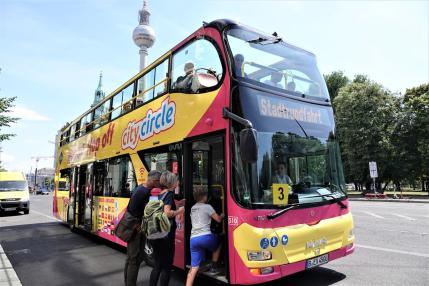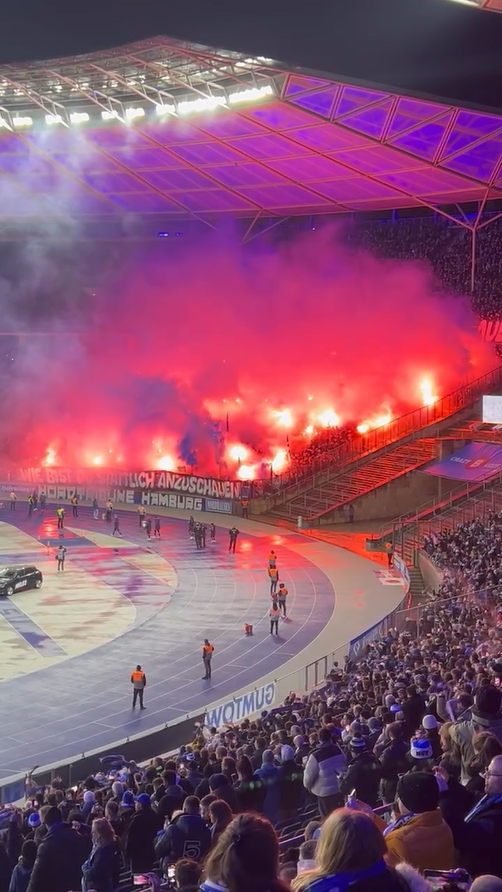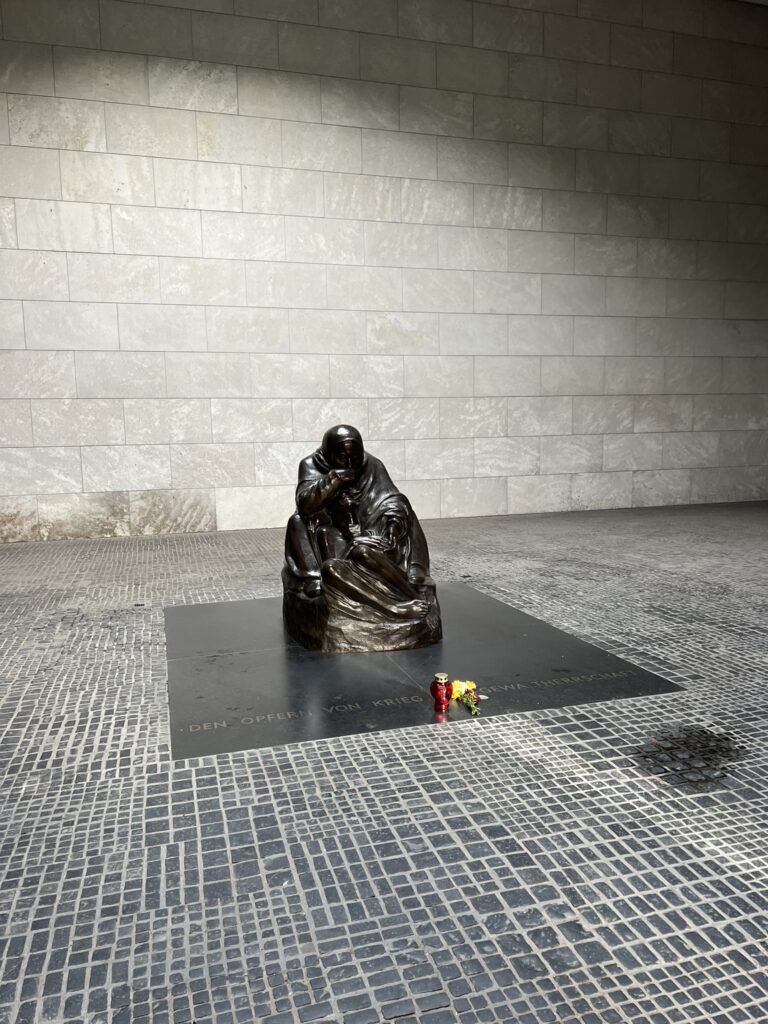WUNDERBAR or SCHEISSE?
When one thinks of luxury travel, Berlin might not be the first city that springs to mind. So when it was requested by my youngest son that he would like to go we thought, why not?
We journeyed with little preconception, what we found was a surprise and something that has truly changed all our lives.



Our stay was at the Hilton Hotel, based in the heart of the City on Mohrenstraße, in the district of Mitte. Although the historic buildings directly opposite the hotel were undergoing some renovations the views from the first floor restaurant were impressive. The Hilton is perfectly situated in the heart of the city, 100m away from a hop-on hop-off bus stop (more about that later) and seemingly less than 15 minutes away from most of the main bars, restaurants and attractions.
We chose a Deluxe Studio which was extremely spacious and well appointed, our booking was made on my Hilton Honors points and one of a number of holidays that my points have paid for over the years. (A definite perk when your work takes you away travelling a lot like mine has).
From the first morning when the excellent Gerrard the day concierge noticed us walking around the foyer trying to organise our movements to the last day our stay was simply an example of German precision and organisation.
Our option whenever we visit somewhere new is to hunt out the nearest Hop-ON Hop-Off Bus tour, well we didn’t have to search very far as not only did Gerrard point out we were less than 100m to a stop but he could sell us the tickets.
The City Circle Stadtrundfahrt Berlin offers an excellent way to explore at your own pace. Here are the key details about this hop-on-hop-off bus tour:

The tour has over 20 stops, allowing you to conveniently hop on and off as you wish. The route includes top attractions like the Berlin East Side Gallery and the iconic Brandenburg Gate. The buses run daily from 10 a.m. to 5 p.m. Each of the modern buses enjoys free WiFi and USB power sockets, The audio guide is available in 20 languages, and free earphones are available (note only wired headphones are available for the commentary even though wifi is available the commentary cannot be accessed this way).

There’s even a special audio channel for kids, hosted by the well-known actor and dubbing artist Santiago Ziesmer, the buses are also wheelchair accessible for all passengers.
There are three ticket options:
- 24-hour pass: Explore Berlin for a full day.
- 48-hour pass: Extend your sightseeing experience.
- 72-hour pass: Enjoy three days of unlimited travel.
- Children up to 6 years old travel free when accompanied by a paying adult.
There are multiple ways to purchase tickets, you can buy tickets online and receive a voucher or as we did through our hotel concierge. Numerous retail outlets across Berlin also sell them.

Our Hotel is in what used to be the Eastern sector, the tour took just over 2 ½ hours and from our stop (no.7 on the map) it takes us further into the Russian held area, to the eastern gallery where some of the most iconic images of the Berlin Wall can still be witnessed.
The tour, although excellent value (especially when you get the 48 pass like we did) really doesn’t do justice to the pure historical gems which are available around every corner.
What we saw on that bus tour was quite difficult to explain, we saw a modern city, a modern city with beautiful ornate 18th & 19th century buildings, and a modern city with extreme ‘communist’ imagery. we found out that a lot of the older historic palaces and buildings have actually been built since reunification in 1989. What the German nation has achieved in this feat is nothing short of a miracle.
When checking into our hotel we asked the reception staff if they could recommend a local bar, without hesitation they recommended the Bellboy less than 100m from the main entrance.
The Bellboy
It is hard to describe the Bellboy it is like walking into a scene from the film ‘Cabaret’, ornate, quirky, elaborate with music (if not playing live) being piped through the establishment in a 1920’s style. We even had ‘Creep by Radiohead’ in this manner! Quirky!


Firstly, you have to book, even for the cocktail bar, table seating only, there is a restaurant area but we kept to the cocktails. The service was impeccable, even taking time to have a conversation with us when we weren’t sure what to order, they asked us what we liked to drink then went over to the barman who created something not even on the menu.
Our son had never tried cocktails before (he is legal drinking age before you ask) and they found two wonderfully weird concoctions for him one which included having a polaroid taken and having it positioned on his glass as it developed.


It’s not cheap (€100 for 6 cocktails) but at the end of the day you’re not going to spend all evening in here, as an experience it was fantastic. In a little over 2 hours we had moved on to the rest of evening.
The Olympic Stadium

Over the years I’ve been fortunate enough to visit some of the great Stadia in the World one missing was the Olympic Stadium Berlin. On the Saturday night of our visit Hertha Berlin were playing Hamburg (both now in the second tier of German football) so my son and I decided to go. The tickets we bought from the Hertha store in one of the shopping malls cost us €45 each, pricey for second tier football but as the night unfolded, we came to realise it was money well spent.
To get to the stadium we decided to use the underground (the nearest station Mitte) was 25 yards from our hotel’s front door! Buying the tickets was simple on a multi-lingual terminal and plotting the trip was also very easy, stay on the train until you get to the Stadiums own station.
I’ve watched sporting events in many countries over the years but what I witnessed this particular evening ranks right up there with the best ever.
Firstly, after arriving at the station the walk to the beautifully lit stadium was along an area full of portable eateries and bars. Here the fans mixed and mingled with each other with not a hint of trouble or tension. I personally stopped going to football matches a number of years ago and have preferred to take my family to Rugby Union matches now mainly because of the more pleasant surroundings and atmosphere.
As we stood, beer in hand, mingling with fans from both sides my son leant over and said ‘Its like being at a rugby match Dad’ and that summed it up perfectly. The beer was not extortionate, the food was good portions and €12 could get you a Bratwurst, Fries and a pint.
As you approached the stadium there was a cordoned area in which bags were searched and empty glasses disposed of and then into the stadium itself, for a second tier match the atmosphere was electric, 53,000 fans, there was segregation but in our area of the stand we sat amongst both Hertha and Hamburg fans. As a spectacle it was one of the best nights I have ever experienced at a sporting venue. They just never stopped chanting.

Within the stadium what made it appear even more like a Rugby match was drink being served people openly smoking, no over officious marshalling, people being treated like adults, it was truly a joyous evening. At one point the Hamburg fans unfurled a banner expressing condolences to the Hertha club as their president Kay Bernstein had recently died. Bernstein was a lifelong fan who was voted into the position by the fans and tragically died in January at the age of 43.

Then the best thing I’ve ever seen at a sporting event, both sets of fans (Hamburg in the first half and Hertha in the second) caused the game to stop by protesting. Both totally in support of each other and both being roundly cheered by each other. The protest was against big corporate interference in ‘their’ sport. In Germany every club is run by what is known as the 50% + 1 rule, this means ‘members’ or ‘fans’ own 50% of all shares of a club +1 (so a majority).

Until 1998, private ownership of any kind was prohibited. The 50+1 rule, introduced in 1998 and helps explain why debts and wages are under control and why ticket prices remain low compared to other major European leagues. It also explains why matches aren’t changed to suit television schedules; the TV companies have to adapt their programming to suit the matches.
The 50+1 rule prevents private or commercial investors from taking over clubs and potentially prioritising profit over the wishes of supporters. Under the German Football League (DFL) rules, clubs cannot play in the Bundesliga (or second division) if outside investors have the greatest say.
As recently in December 23 German clubs approved a proposal to sell a stake in Bundesliga TV rights in exchange for investment capital. The proposed arrangement involves trading an 8% share of revenues over two decades to an investment firm.
Proponents argue that this move would enhance the league’s global visibility and allow a greater focus on streaming services. However, critics fear that it could compromise the integrity and traditions of German football by prioritizing commercial interests over fan culture.
Fans across various stadiums have expressed their strong opposition to this proposal and this is what we witnessed this night.
Previously Borussia Dortmund, Freiburg, Bochum, Union Berlin, Hamburg, Hannover, Heidenheim and Wolfsburg have all experienced protests, this night was our turn.

Our protests, tennis balls, (they obviously weren’t looking for these at the bag check area beforehand!) It takes some throwing because the distance from the stands to the pitch is huge but literally hundreds were thrown onto the pitch. The match got suspended for nearly 30 mins but no one cared, the prize and the stakes are too high, the integrity of their sport, they need to cling on and fight to their last breath to what they’ve got, the alternative the soulless and painful to watch, English Football.
I know I should have been talking about the stadium itself which is in my humble opinion the ’best’ football stadium I have ever been to in my life. Forget all this modern soulless nonsense, give me pure classic art deco anytime. When you consider this was built for the 1936 Olympics it is an architectural and engineering wonder.
Mikhail and the Walking Tour
Prior to travelling to Berlin we booked a 3 hour walking tour on Tripadvisor, this took place on the Sunday morning and our guide Mikhail stole the show. We met up centrally outside of Friedrichstraße railway station (a 10minute walk from the hotel) and then had one of the most colourful and interesting tours we have ever had anywhere.

Mikhail who was from Russia originally gave great insight especially to the Eastern part of Berlin as it was in this regime he grew up. He was witty, funny, not overbearing just perfect as a guide. He did warn us before we went that it may take a little over 3 hours because he likes to talk but no one cared.


The beauty of a walking tour is that even the most obscure areas can be brought to life, one such instance happened when on the tour, walking through what appeared to be a typical suburban area with flats and a residents carpark we had explained to us that at that particular spot we were indeed standing directly above Hitlers bunker! Mikhail went into great length telling us about the last days of the 3rd Reich and drew a crowd of other bypassers too, who at the end of his ‘performance’ thanked him with a little gratuity.
Other highlights of the tour were Checkpoint Charlie, Brandenburg Gate, Unter Der Linden, The Kaiser Wilhelm Memorial Church, The Reichstag and the thoroughly stunning Memorial To The Murdered Jews of Europe.




Thoroughly recommend this tour especially if you’re lucky enough to have Mikhail as your guide.
Open History
One of the most refreshing aspects of spending anytime in Berlin (and I assume in Germany as a whole) is their instance on Open History (Offene Geschichte). This concept encompasses the idea of history being accessible, transparent, and subject to public scrutiny and engagement. It emphasises the importance of acknowledging and learning from the past. (In fact everything it should be!)
History as the old saying goes was written by the winners, in Berlin I witnessed no spin, no agenda’s when the History was being presented to you I got the impression that we were being told ‘now here are the facts do with them what you wish’.
Berlin is known for its commitment to remembering its history, including the Holocaust, the Cold War, and the Berlin Wall, among other significant events. The suffering the people had to go through not only during the war but particularly afterwards is unthinkable.
One superb example of this Open History approach is the Topography of Terror a stunning museum in the heart of the city with indoor and outdoor exhibits. It sits on the site of the old Gestapo and SS Headquarters which were raised to the ground by allied bombs. The site first shown exhibits in 1987 as part of Berlins 750th anniversary.

The museum which is free to enter shows a bilingual journey from the rise of the National Socialists in 1933 through to their ultimate demise in 1945. It explains how the geopolitical, and economic reasons more than anything allowed what was minority party to not only take control but force through intimidation and ruthless oppression.
It is an incredibly poignant experience and one that should not be missed on a trip to Berlin.
Another very evocative and almost hidden piece of history can be found on the wall of the Central Memorial of the Federal Republic of Germany (Neue Wache), it typically reads ‘To the victims of war and tyranny’ and details to those who were oppressed during the 3rd Reich but also very interestingly as a footnote also states;


‘We Honour the Memory of the Women and Men who were Persecuted and Murdered because they Resisted Totalitarian Dictatorship after 1945’.
Conclusion
My long weekend in Berlin was an unforgettable journey through history, culture, and vibrant city life, leaving me with memories that will last a lifetime.
The city’s ability to honour its complex history while simultaneously embracing modernity and diversity is truly remarkable. Walking along the remnants of the Berlin Wall, now a canvas for artists, and exploring the diverse neighbourhoods, each with its own character, I was struck by the resilience, creativity and shear bravery of the Berliners.


Berlin encapsulates the spirit of renewal and has something for everyone – whether you’re a history buff, art lover, or a foodie. The city’s open history approach, allowing visitors to engage deeply with its past, and its bustling present, full of life and innovation, makes it a must-visit destination.


Berlin is not just a city; it’s an experience, a testament to the human spirit’s capacity for transformation, growth and regeneration.
The city itself is incredibly accessible, public transport is excellent but the one thing that touched me more than anything else in my visit was the people, the indomitable spirit of a people who were so cruelly divided yet now are so openly welcoming.
To answer the question set at the start of the article the answer is very simple, WUNDERBAR!!!
‘Ich bin ein Berliner’ now and forever.
This article was written by John Smith.
John is based in North Wales, UK and is an Executive Business Consultant. John is a contributory author to publications around the world and a Worldwide renowned Executive Coach.


